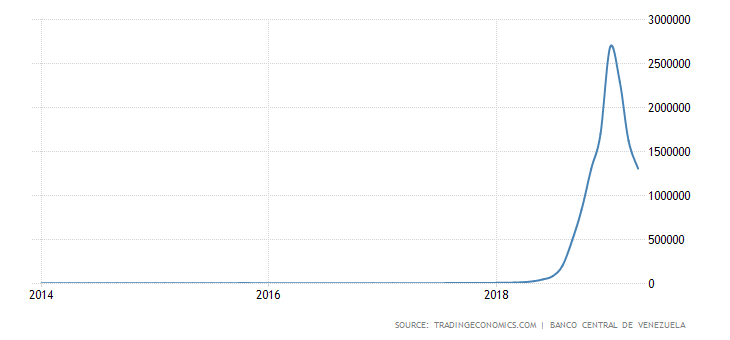Austrian economics and Bitcoin
The story of the Austrian School of economics begins in the 15th century, when the followers of St Thomas Aquinas, who was writing and teaching at the University of Salamanca in Spain, sought to explain the full range of human actions and social organisation.
Over the course of several generations, they discovered and explained the laws of supply and demand, the cause of inflation, the operation of foreign exchange rates, and the subjective nature of economic value.
Austrian supporters were advocates of property rights and the freedom to contract and trade. They celebrated the contribution of business to society while doggedly opposing taxes, price controls, and regulations that inhibited enterprise.
Austrian economics school of thought
The Austrian School uses the logic of a priori thinking—the idea that a person can think on his/her own without relying on the outside world—to discover economic laws of universal application. Other mainstream schools of economics – like the Neoclassical School, the New Keynesians, and others – make use of data and mathematical models to prove their point objectively. In this respect, the Austrian School can be more specifically contrasted with the German Historical School that rejects universal application of any economic theorem.
The Austrian School maintains that prices are determined by subjective factors like an individual’s preference to buy or not to buy a particular good, whereas the Classical School of economics holds that objective costs of production determine the price and the Neoclassical School holds that prices are determined by the equilibrium of demand and supply.
The Austrian School rejects both the classical and neoclassical views by saying costs of production are also determined by subjective factors based on the value of alternative uses of scarce resources, and the equilibrium of demand and supply is also determined by subjective individual preferences.
Capital, money supply, and inflation
Austrian economics is fairly against rent-seeking behaviours, meaning it’s crucial that capital is rightfully distributed among many peers as it will enable an optimum free market where agents compete over time to find the best price-to-cost ratio of production, and investment should power productive means.
They point out that when capital gets too concentrated, there’s a higher probability of extreme rent-seeking behaviours, where the capital/property owner keeps increasing prices due to lack of fair competition. Austrian economics is therefore not against state intervention – it is expected in some situations to guarantee the freedom of markets, although it should be minimal.
In terms of monetary supply, Austrian economics supports the use of sound money. They believe the power to create money should be linked to an asset that is outside a systems’ control. For example, when currency was linked to gold, it wasn’t possible for a given state to create more currency without purchasing additional gold. When this ratio was abolished and the world switched to the USD, what happened was instead of buying gold, countries simply had to hold USD reserves to mint additional currency.
Obviously, this monetary system puts extra pressure on spending, potentially resulting in hyperinflation – as we’ve seen in Argentina, Botswana and, currently, in Venezuela. A chart of Venezuela’s inflation rate can be seen below.

When more currency is minted and reaches the market – usually through bank loans – prices have a tendency to rise, given there is more currency available on the market. Think of it like this: the more there is of anything, the less valuable that thing is. That is why some collections are valuable as there is a limited quantity. There is also a trust mechanism that lives within currency, meaning the more valuable it is, the more trustworthy said currency is.
For instance, if your local currency allows you to buy more products than some other currency, yours is better. The problem is, the more currency there is available, the less valuable it is, meaning the less products you can buy with it. Plus, other merchants will need additional currency to overcome inflation, which usually becomes a snowball difficult to stop.
Austrian economics and Bitcoin
Bitcoin is a currency and monetary system based on a limited supply, much like Austrian economics supports. In simple terms, the most amazing properties of Bitcoin are that it’s a digital asset that’s easy to exchange but expensive to create, it’s impossible to counterfeit, and it has a limited quantity – much like gold. Plus, it has plenty of advantages over fiat currency or even precious metals as it is infinitely divisible and is incredibly simple to transport.
At the time of writing, there is an ongoing debate about whether to use smaller or larger blocks on the blockchain. Some cryptocurrency enthusiasts like Roger Ver believe the block size should be allowed to scale, meaning bigger blocks with more transactions. Others like Jimmy Song support the view that blocks should remain small in order to give users the ability to run full nodes without worrying too much about disk capacity.
I personally believe the decision must come from the mining and developer communities. With the inclusion of Lightning and other side chains, I see little reason to increase the stress on the Bitcoin network. Not to mention that increasing the block size would also make the network more susceptible to latency problems as blocks would be heavier and would take longer to transmit.
If you’re into Bitcoin for its decentralisation, I personally believe smaller blocks are better. However, you should be aware there’s plenty of support for bigger blocks, much like Bitcoin Cash uses. Ultimately, only time will tell which Bitcoin implementation will gather the most adoption from the mining and user communities.
So far, BTC is still the most widely used implementation of Bitcoin.
What do you think the future holds?
The post Austrian economics and Bitcoin appeared first on Coin Rivet.

 Yahoo Finance
Yahoo Finance 